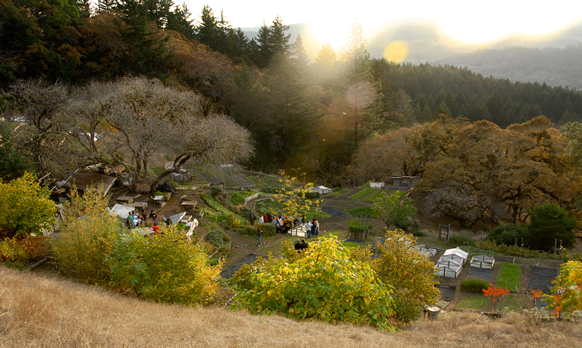How Three US Mini-Farms Are Sowing the Seeds of Global Food Security
Her face shaded by a wide-brimmed straw hat, Olawumi Benedict is cheerfully tending to her "little babies"—kale seedlings growing in shallow wooden flats until they're hardy enough for transplanting into soil beds. Three miles over the hills on another small farm, Jonnes Mlegwah is double-digging the soil with a spading fork, preparing to plant potatoes. Both are Africans, but these mini-farms are 140 miles north of San Francisco in Mendocino County, better known for the harvesting of redwood trees and marijuana plants than kale and potatoes. Benedict and Mlegwah are a long way from home, and the Biointensive farming system they're mastering is a long way from becoming the norm—in the U.S. or Africa. Still, millions of small-scale farmers, especially in Latin America and Africa, are turning to it because it's low-cost and low-tech, and it produces far greater yields than conventional agriculture while using far less land and water. Research shows that Biointensive farms have the potential to use 50 to 75 percent less land, 50 to 100 percent less fertilizer, 67 to 88 percent less water and 94 to 99 percent less energy to produce a given amount of food than conventional farming does. Perhaps most intriguingly, the Biointensive method "grows" farmable soil—at a rate 60 times faster than occurs in nature—while current farming methods tend to deplete farmable soil through wind and water erosion. Much of the credit for Biointensive's global impact goes to Ecology Action, which has brought Benedict, Mlegwah and about 100 other interns and apprentices to California mini-farms for internships since 2001. Founded by organic gardening pioneer John Jeavons in 1971 and funded by foundations and donations, the nonprofit teaches Biointensive farming at three Mendocino County locations to agriculture activists and researchers from around the world who learn the Method and then go on to teach others.
Sitting at a pine-shaded picnic table overlooking the 10,000-sq-ft Ecology Action farm where Mlegwah works, the neatly bearded Jeavons, 74, sounds professorial while rattling off numbers. But there's no hiding his passion for Earth-friendly farming or his concern for the world's growing water scarcity and rapid disappearance of farmable land. "The main criticism of Biointensive is that it requires too much labor," he says. "But it's really more skill-based than labor-based—you work smarter, not harder. When you miniaturize agriculture, you don't need as much land." Support for the method has come from many quarters, including the Peace Corps, UNICEF and the 2010 UN Convention to Combat Desertification. Former US Department of Agriculture Secretary Bob Bergland has called Biointensive farming a potential way out for malnourished people worldwide. "That would be a remarkable development in this world, and would do more to solve the problems of poverty, misery and hunger than anything else we've done," Bergland says in Jeavons' book How to Grow More Vegetables. Learning and Growing
Go to: Article Page 1 | Page 2
top | Newsletter Home |Table of Contents| Archive
|



.jpg)
